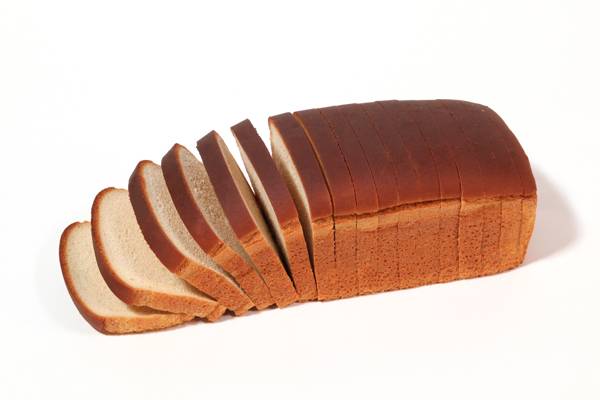Exploring the Renaissance of Ancient Grains in Modern Gastronomy
In recent years, there has been a significant resurgence of interest in ancient grains among both health enthusiasts and culinary experts. Once staples of prehistoric diets, these grains have re-emerged as nutritious and sustainable alternatives to modern, highly processed cereals. The revival of ancient grains such as farro, quinoa, teff, kamut, and spelt is not only a nod to our gastronomic heritage but also an adaptation to contemporary demands for more diverse and healthful eating options.
Ancient grains are defined as cereals that have remained largely unchanged over the last several centuries. They are considered to be more natural and less modified than common wheat, which has undergone extensive selective breeding to meet commercial demands for yield and consistency. This modern manipulation has transformed wheat into a crop that, while prolific, is also associated with a host of health concerns, from gluten sensitivities to a higher glycemic index. In contrast, ancient grains offer a richer variety of nutrients, a lower impact on blood sugar, and, for many people, enhanced digestibility.
Enthusiasts also praise ancient grains for their deep, nuanced flavors. The nutty, earthy, and sometimes sweet notes inherent in these grains offer a complexity that modern wheat often lacks. They add character to a dish, whether incorporated into bread, used as a base for salads, or served as a hearty accompaniment to proteins and vegetables.
Moreover, the sustainability of growing ancient grains is attracting the interest of environmentally conscious consumers and producers alike. These grains tend to require less fertilizer and pesticides than conventional grains, as they have evolved to thrive in a variety of soil conditions and climates without the aid of modern agricultural interventions. This feature makes them a favorite among organic farmers looking to minimize their ecological footprint. It also provides a boon to agricultural biodiversity by encouraging the cultivation of a wider array of crops.
Renowned chefs around the globe have embraced the potential of ancient grains, incorporating them into both traditional and innovative dishes. Michelin-starred restaurants feature plates with amaranth, sorghum, and millet, presenting them in creative ways that challenge the palate and elevate the dining experience. The versatility of these grains ensures they can easily be adapted to a range of cuisines, paying homage to the past while seamlessly integrating into the modern culinary lexicon.
Not only do ancient grains appeal to those with discerning tastes and dietary restrictions, but they also resonate with consumers seeking authenticity in their food choices. There is a growing trend toward alimentary provenance, where the story of the food—its origin, cultivation methods, and cultural significance—is almost as important as its flavor. Ancient grains carry narratives from civilizations long past, offering a tangible link to the agricultural practices and dietary habits of our ancestors.
This gastronomic revival of ancient grains could also have significant implications for global health and nutrition. For populations that rely heavily on a limited range of staples, diversifying food sources with nutrient-dense ancient grains could help alleviate nutritional deficiencies and contribute to a more balanced diet. Agricultural researchers and policymakers are beginning to recognize the potential of these grains to contribute to food security, especially in regions prone to climate instability.
Acknowledging the intricate dance between ancient grains and contemporary cuisine opens a world of opportunity for food innovation and cultural exploration. The market for these grains is expanding, with artisan products popping up in specialty food shops and large supermarkets alike. Cooking enthusiasts are experimenting with these ingredients in their kitchens, spurred on by a bounty of online resources, cookbooks, and cooking shows dedicated to these ancient treasures.
As we continue to rediscover and reinterpret the role of ancient grains in our diets, it becomes clear that these humble seeds not only provide sustenance but also bridge a connection between the old and the new. They remind us that, though food trends come and go, the foundations laid by our culinary forebears can still have profound relevance in today's globalized kitchen.In diving deeper into the grain bin of history, one cannot help but be captivated by the individual stories of these age-old cereals. Take, for instance, farro, an Italian term that refers to three types of heirloom wheat strains including einkorn, emmer, and spelt. In ancient Rome, farro was a staple grain that not only fed the legions but also the common folk of the empire. Einkorn, the original farro, is the most ancient wheat known to scientists and carries with it a genetic simplicity that can be a boon for those who struggle with modern wheat varieties.
Similarly intriguing is the African cereal teff, which leads as the smallest grain in the world and is a primary food source in Ethiopia. Teff’s minute size belies its nutritional punch; it is high in calcium, iron, protein, and amino acids. This grain's resilience and the ability to grow in both drought and waterlogged soil conditions make it a vital crop for sustaining agriculture in challenging environments. Its cultural importance is underscored by its use in making injera, a spongy, sour flatbread that's a cornerstone of Ethiopian cuisine.
As we delve into the culinary potential of ancient grains, it is also worth noting their health benefits. Quinoa, perhaps the most recognized among ancient grains in the Western world, is a complete protein, containing all nine essential amino acids. It is also gluten-free, making it a popular alternative for those with celiac disease or gluten sensitivity. This Andean superfood has climbed to such popularity that the United Nations declared 2013 the 'International Year of Quinoa' to recognize its potential in combatting hunger and malnutrition worldwide.
Another notable mention is kamut, also known as Khorasan wheat. Kamut is often touted for its rich, buttery flavor and is found in a variety of products, from pasta to crackers. It is higher in protein and minerals like selenium, zinc, and magnesium compared to modern wheat, and many people find it more digestible. While chefs have been captivated by its nutritional profile and taste, consumers are drawn to its trademarked guarantee that it remains untainted by modern wheat breeding programs.
Yet, with this growing demand and increased spotlight on ancient grains, challenges arise. Sourcing and maintaining the authenticity of these grains can be difficult as commercial interests seek to capitalize on the trend. There is also the risk of overcommercialization. Quinoa’s international success has led to fears of economic and ecological consequences in its native countries, where locals may no longer afford the crop that for centuries has been a dietary staple.
These challenges call for a conscientious approach in integrating ancient grains into the global food market. Sustainable farming practices, fair trade policies, and the involvement of indigenous communities in preserving their heritage crops are key in ensuring that the ancient grains boom benefits all stakeholders. Additionally, educating consumers about the origins, cultivation, and use of these grains can foster a deeper appreciation and a more ethical consumption pattern.
As the gastronomic world increasingly leans toward whole foods with minimal processing, ancient grains stand tall as a testament to the wisdom of eating closer to nature. Professional chefs and home cooks are rediscovering the art of working with these grains in their most wholesome form, often utilizing time-honored techniques such as stone-grinding, soaking, or fermenting to enhance flavor and nutritional value. These grains are finding their way not only into rustic, homemade loaves of bread but also into the realm of fine dining, where their textures and tastes are harnessed in innovative ways to delight the most discerning palates.
In the wake of this culinary revival, it's clear that the golden, amber, and russet hues of these ancient kernels have much to offer. Whether it's in the form of heirloom grain bowls, artisanal bread, or exotic global dishes, ancient grains hold a special place in the agricultural narrative – one that continues to evolve with each passing season and every creative recipe. As we embrace these grains of antiquity, we're not just indulging in a trend; we're participating in a powerful continuum of food culture that sustains, nourishes, and, indeed, connects us across the ages.









Comments